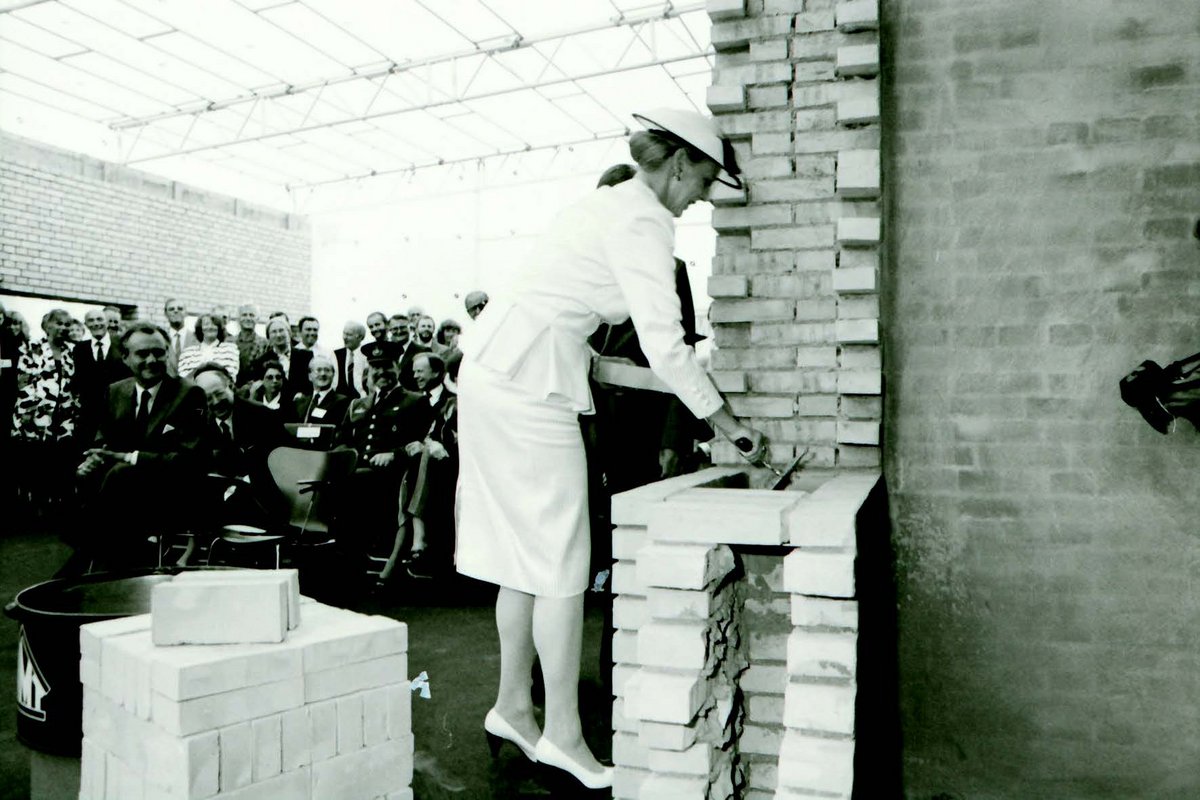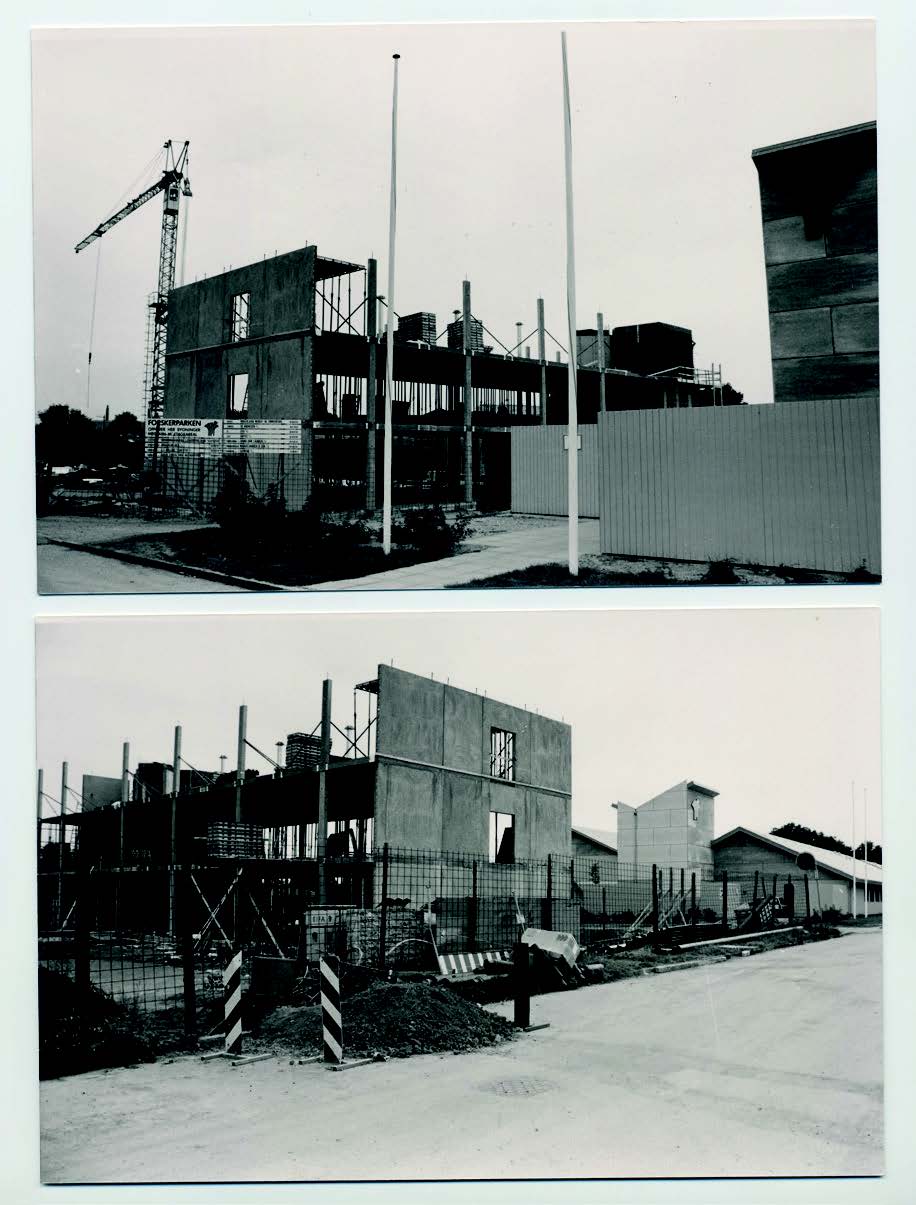More than money
The Aarhus University Research Foundation celebrates its 80th anniversary
The Foundation awards more than DKK 100 million in grants every year and thus makes a significant contribution to independent research at Aarhus University. But the Foundation is more than money. In 2024, it celebrated its 80th anniversary and now looks forward to a new era.
By Jesper Bruun
‘It is fun to do something everyone thought was impossible’.
When the Aarhus University Research Foundation – AUFF – was established on 2 September 1944, it had a share capital of DKK 300,000, and in 1946, it awarded its first grants, a mere DKK 18,700. Today, the Foundation’s equity has increased to DKK 5.4 billion, it awards more than DKK 100 million in grants every year to more than 300 researchers, and the parent foundation has grown to include a number of subsidiaries.
In a Danish university context, AUFF is a unique example of a foundation supporting independent research. It is a story success that no one had predicted, as Managing Director Jørgen Lang says.
‘The Foundation was a few drawers in someone’s office. That is all it was. Nothing more. And it stayed that way for many years. Today, the Foundation has grown into an umbrella of activities supporting scientific research at Aarhus University within a number of areas, and it has thus played a key role in the development of the University’, he says.
In 2024, AUFF celebrated its 80th anniversary, and we would like to use this opportunity to look back at where we came from and forward to a new era in the history of the Foundation, where it will grow even stronger.
The first 60 years
AUFF was established in 1944, when then director of Cheminova, the Danish engineer Gunnar Andreasen, transferred his entire share capital in the company to Aarhus University. At the time, the shares were worth DKK 300,000.
The objective of the Foundation was to support scientific research at Aarhus University. And so it did. The Foundation lived a quiet life, made money on shares and bonds and regularly awarded grants to researchers at Aarhus University. By 1986, the Foundation’s average annual grant pool had increased to just under DKK 5 million.
‘After the IPO of Cheminova in 1986, the Foundation started to sell off some of its shares. This marked the beginning of a new era with a significant increase in grant levels and the creation of the first subsidiaries. The first thing they did was to invest in a science park – the present-day INCUBA – to help strengthen the connection between science and society. They had to find a place for the science park, and as the park was not sufficiently capitalised to do so, the Foundation established another subsidiary, the real-estate company FEAS. And it became a success’, Jørgen Lang says.
Its real-estate investments led to financial growth, and up until 2012 the Foundation’s equity and thus the size of its grants increased significantly. In the 2000s, it thus awarded DKK 55-60 million in grants a year.
Queen Margrethe and then Minister of Education Bertel Haarder laid the foundation stone of the Aarhus Science Park on Gustav Wieds Vej. The objective of the park was to promote the transfer of technology from the University and to encourage more researchers to establish start-ups.
Today, the buildings on Gustav Wieds Vej house university laboratories and teaching facilities. In 2007, the Aarhus Science Park merged with IT-huset Katrinebjerg to form the INCUBA Science Park.
We accepted these gifts because they support the Foundation’s activities.
Showered with gifts
In the beginning of the 2010s, AUFF received a number of gifts in the form of companies, all of which supported scientific research at Aarhus University.
In 2012, the Foundation took over the government-approved RTO Alexandra Instituttet. The foundation owning the institute had served its time and wanted to transfer the Alexandra Institute to a new, suitable owner and thus contacted AUFF, which agreed to take over.
In 2013, the Aarhus University Press was in trouble, and AUFF bought it for DKK 1 to ensure and advance knowledge dissemination at the University through an appropriate channel. AUFF transferred ownership of the publishing house to a consolidated private commercial foundation.
Finally, in 2014, the self-governing institution Kollegierne i Universitetsparken gifted the University Park Colleges to the Foundation, as the Colleges wanted to continue to offer attractive, up-to-date accommodation to students at Aarhus University, but was experiencing financial difficulties.
‘We accepted these gifts because they support the Foundation’s activities. They have made it easier for us to do a good job. The Alexandra Institute bridges the gap between science and business; the Aarhus University Press ensures knowledge dissemination; and the University Park Colleges are part of the spirit of Aarhus University’, says Jørgen Lang.
One campus
– today and 40 years from now
In 2015, an American company, FMC Corporation, acquired Cheminova. At the time, AUFF owned 38.55 per cent of the share capital and its net proceeds from the sale was DKK 2.4 billion.
‘It gave the Foundation a real boost’, Jørgen Lang says and adds: ’It gave us more muscle power and enabled us to raise the grant level. At the same time, the Central Region Denmark was in the process of building the new Aarhus University Hospital in Skejby, and we were able to purchase the former Aarhus Kommunehospital, which is currently being transformed into the University City – one campus serving the entire university, promoting community cohesion across disciplines and departments and attracting new students’.
AUFF supports scientific research at Aarhus University in a number of ways – not just through funding. For instance, the Foundation owns the conference centre Sandbjerg Estate, where researchers at Aarhus University can organise courses, seminars and workshops or apply for a research and writing stay. The Estate was gifted to AUFF in 2021 by the self-governing institution Sandbjerg Gods.
Aside from the University City, the Foundation is expanding its facilities in Katrinebjerg to group the engineering science environments in one location and to ensure that the AU campus is large enough to house all the University’s activities today as well as 40 years from now.
More than money
Today, AUFF has a net worth of DKK 5.4 billion, and in 2024, it awarded approx. DKK 135 million to research at Aarhus University. Aside from INCUBA, the Alexandra Institute, FEAS (which has been divided into two separate companies, focussing on commercial and residential properties, respectively) and the Aarhus University Press, the AUFF group also includes the course provider AU Cetera and the conference centre on Sandberg Estate.
As a group, the Foundation paves the way for advances in research throughout the university – today and in the future.
‘The Foundation is more than money. And even though we expect the grant level to exceed DKK 200 million a year sometime in the 2030s – alongside the other foundations supporting Danish research – our development as a group has enabled us to do and build things which in turn enables us to support the continued development of the University as a whole. The objective of the Foundation is to support scientific research at Aarhus University, and today we do so through several subsidiaries which help us meet this objective’, says Jørgen Lang.

